Hey, Listen!
A Thorough Analysis of the Music of "The Legend of Zelda"
This definitive book unravels the profound relationship between games and music, based on a masterpiece that combines play and performance.
From the classic pieces played by protagonist Link on his ocarina to dungeon background music,
to the sound effects used when acquiring items and on menu screens,
this book meticulously analyzes every piece of music from the timeless masterpiece "The Legend of Zelda: Ocarina of Time."
A long-awaited book for game music enthusiasts and fans of the "Zelda" series.
▲A structural analysis of the music in "Ocarina of Time." Learn how each piece of music interacts with the game's progression and presentation.
▲Explore Koji Kondo's unconventional compositional techniques, which incorporate musical genres from around the world, past and present, while remaining unconstrained by tradition.
▲Includes approximately 110 illustrations, including sheet music, waveforms, and gameplay.
¥3,400 + tax
Table of Contents
Preface
Chapter 1: The Background of the Music of Ocarina of Time
Nintendo Game Franchises
†The Legend of Zelda
Koji Kondo's Approach to the Music of The Legend of Zelda
Nintendo 64 Music
Ocarina of Time Music
Chapter 2: The Ocarina and Link's Musical Performance
"Ocarina"
†Why the Ocarina?
†Link's Ocarina Performance
†What Lies Beyond the Four Notes
†Ocarina Song Mastery
Music
†Plot Progression and Assist Melodies
・Zelda's Lullaby - A Surprising Symbol of Musical Power
・Song of Time - A Musical Evocation of the Past
・Epona's Song - A Simple Song of Loss
・Song of the Sun - A Fragmented Restart
・Saria's Song - A Bridge Between Worlds
・Song of Storms - A Small History Repeatedly Played
†Warp Song
・Prelude of Light - A Subtle Sense of Progress
・Minuet of the Forest - A Harmony of Time and the Vibrancy of Life
・Bolero of Fire - Movement and Passion
・Serenade of Water - Duality of Character and Perspective
・Nocturne of Darkness - Mystery and Ambiguity
・Requiem of the Soul - Religion and Spirit
Performing Scarecrow Songs and Other Music
†Frog Choir
†Stalkids
Music Performances in Ocarina of Time
The Function of Music Performance in Games
Chapter 3: Location Cues
Hyrule Field - A Familiar Song
†A Familiar Song
†Introduction
†Daytime Tags
†Introspection Tags
†Battle Tags
†Music, Players, and Geography
Location Cues Based on Ocarina Songs
†Epona's Song and Lon Lon Ranch - Associations with Farm Life
†Temple of Time and Song of Time - Cathedral Soundscape
†Windmill and Song of Storms - A Strange Cycle
† Saria's Song and the Lost Woods - Cheerful repetition and misdirection
Dungeon-style cues
† Inside the Deku Tree - Organic tones
† Dodongo's Cavern - Acoustic textures of metal and stone
† Inside Jabu-Jabu's Body - The rumbling of a fish's stomach
† Forest Temple - Forest sounds
† Fire Temple - Audible and inaudible voices
† Ice Cave - Crystal reverberations
† Water Temple - Danube River Dungeon
† Dark Temple and Bottom of the Well - Voices and drums echoing from the depths
† Soul Temple - The meaning of the land
† Ganon's Castle
・Castle Basement - A generalized expression of threat
・ Ganon's Tower - A gothic expression of evil
Towns and villages
† Kokiri Forest - Optimism and decorative elements
†Castle Town - The scent of European tradition
†Kakariko Village - A melancholic haven
†Goron City - Sounds depicting the texture of the mountains
†Zora's Domain - A safe harbor
†Gerudo Valley - Hispanic traditions echoing through the desert
Generic locations
†Shop - In-store music common to Hyrule
†Entertainment mini-games - Connections to the amusement park
†House - A musical starting point
†Drug store, ghost shop, Lake Mirage Laboratory - A small shop of horrors
†Fairy Fountain/Start Menu - Angel's Harp
†Location music
Chapter 4: Character themes and cutscenes
Lactator's Theme
†Princess Zelda's Theme - A Floating Lullaby
†Ganondorf's Theme - Ominous Chords and a Somber Sequence
†Sheik - An Unconventional Warrior's Theme
†Kaepora Gaebora (Owl Archsage) - Authority and Lightness
†The Deku Tree - Ancient Uncertainty
†Koume and Kotake - Sisters at War
†Intentional Omissions
Other Cutscenes
†Opening - An Unexpected Beginning
†Flight - The Repetitive Sound of Wings Flapping
†Legends, Spirits, and Goddesses
・The Legend of Hyrule - A Musical Creation Myth
・Sanctuary/Sage's Chamber - A Land of Stagnation
・Rainbow Bridge and Sage's Seal - Harmony of Music and Magic
†Report Rewards and Milestones
・Princess Zelda's Reflection - Meeting the Princess
・The Door of Time - Musical Dialogue
・Escape from the Farm - Anthem of Liberation
†End Credits - Final Finale
†3D Ocarina of Time
Cutscene Music
Chapter 5: Ludus Cues
Battle Music
†Musical Characteristics of Battle Cues
・Rhythm and Sound
・Harmony and Structure
†Implementation in the Game
†Boss Battle Victory
Treasure and Challenge Cues
†① Acquisition Cues
・Opening a Treasure Chest - A Sound-Informed Gesture
・Acquiring an Item - The Lineage of Success Sounds
・Acquiring a Heart Piece/Skulltula Sign - Fanfare Completion
・Golden Skulltula - Absence of Realism
・Obtaining a Minor Item - Success Chime
・Master Sword - Tradition of Heroic Deeds
・Obtaining a Heart Vessel - Rare Sound of Success
・Learning a New Song/Fairy Ocarina - Musical Education through Praise
・Obtaining Spirit Stones and Medals - Unique Blessings
†② Puzzle Music
・Timed Puzzles - The Sound of Time
・Silver Rupees - The Design Language of Music
・Solving a Puzzle - The Aha Moment in the Game
・Correct Moves/Performing an Ocarina Song Correctly - The Sound of the Correct Answer
†③ Defeat Music - Game Over
†④ Mini-Games - Trivial Joy
Horse Racing Minigame - Epona's Hoedown
†⑤ Special Sequences
・Castle Courtyard - Casual Infiltration
・Ganon's Castle Collapse - Dramatic Impression
Aesthetic Value in Gameplay
Chapter 6: Interface and Sound Effects
① Interface Earcons
†Menus and Dialogue
†Targeting System
†Musical Sound for Interfaces and Information
②Musicality and Magic
③Sound and Movement
④Enemy Sound Effects
Conclusion
Chapter 7: Ocarina of Time
Further Developments in the Series
†Parallel World - Majora's Mask
†Continuity with Certain Series Titles
Decontextualizing Music
Multivalent Music Media
Epilogue




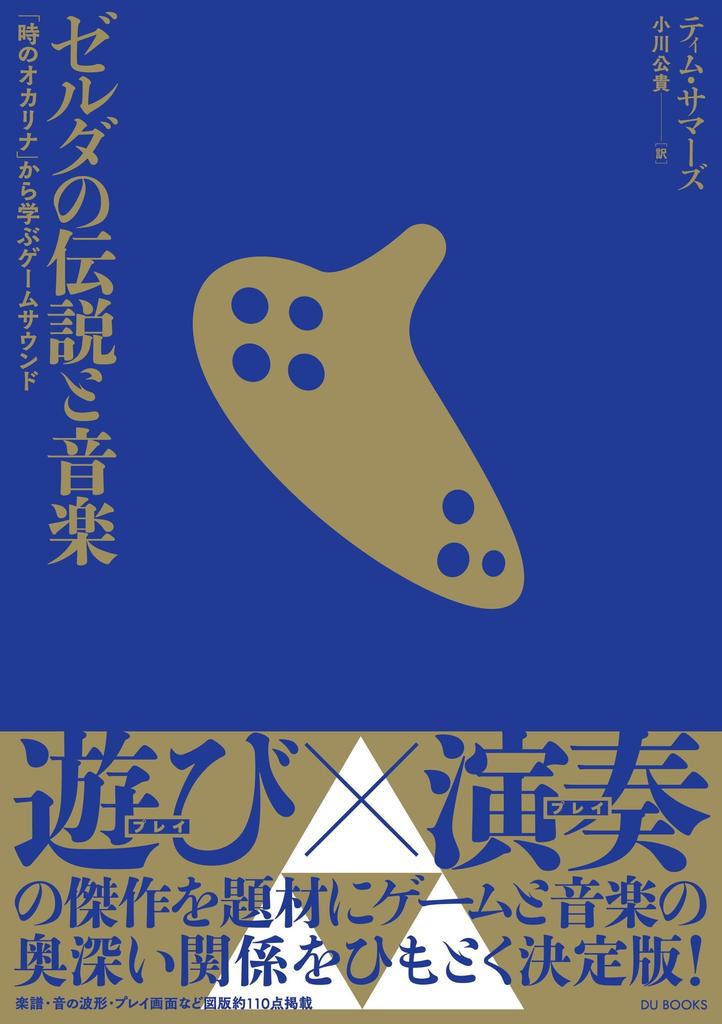
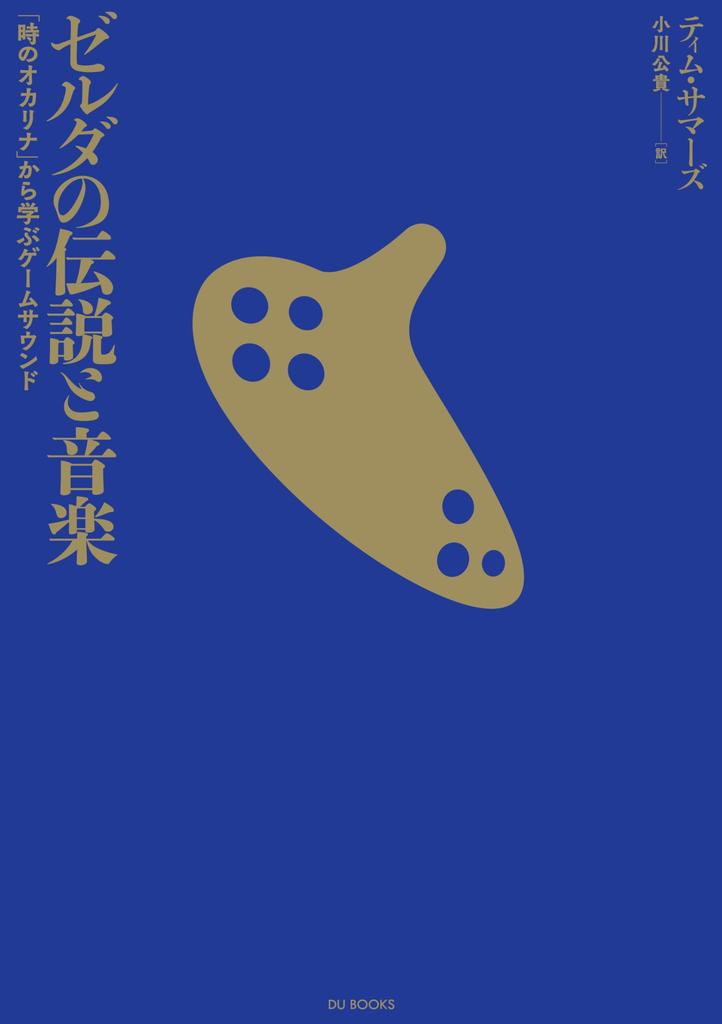
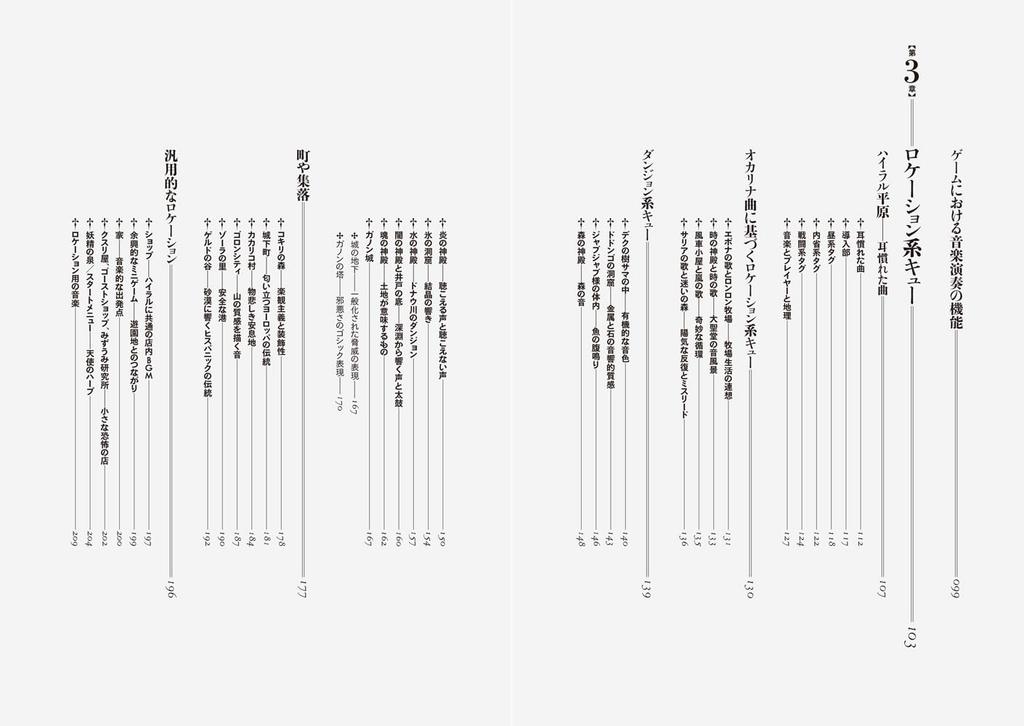
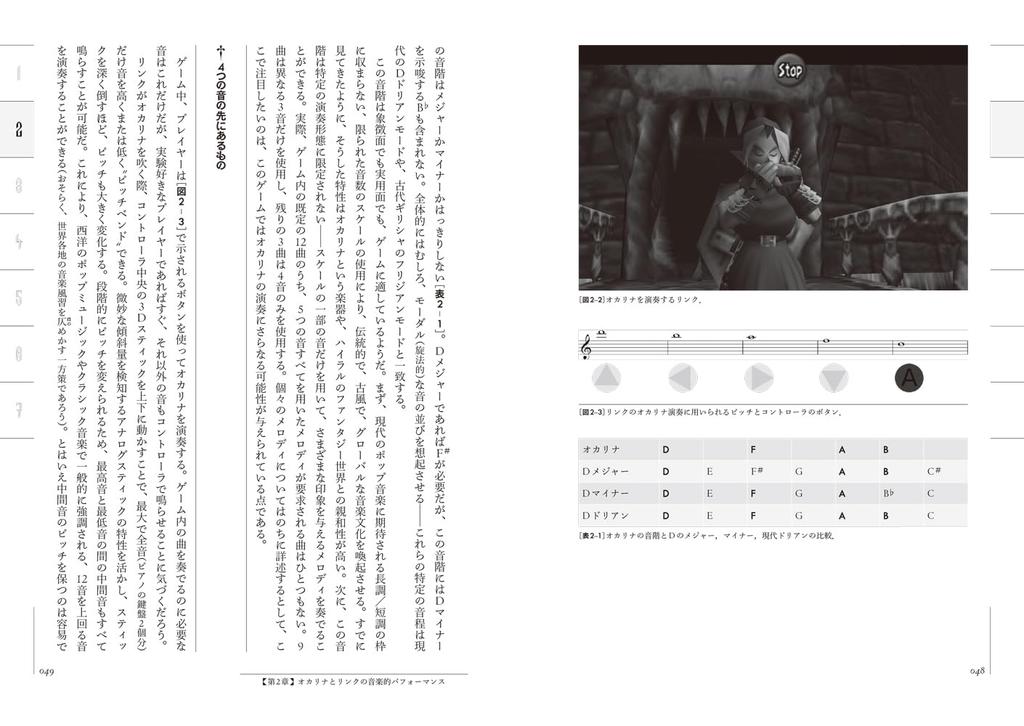
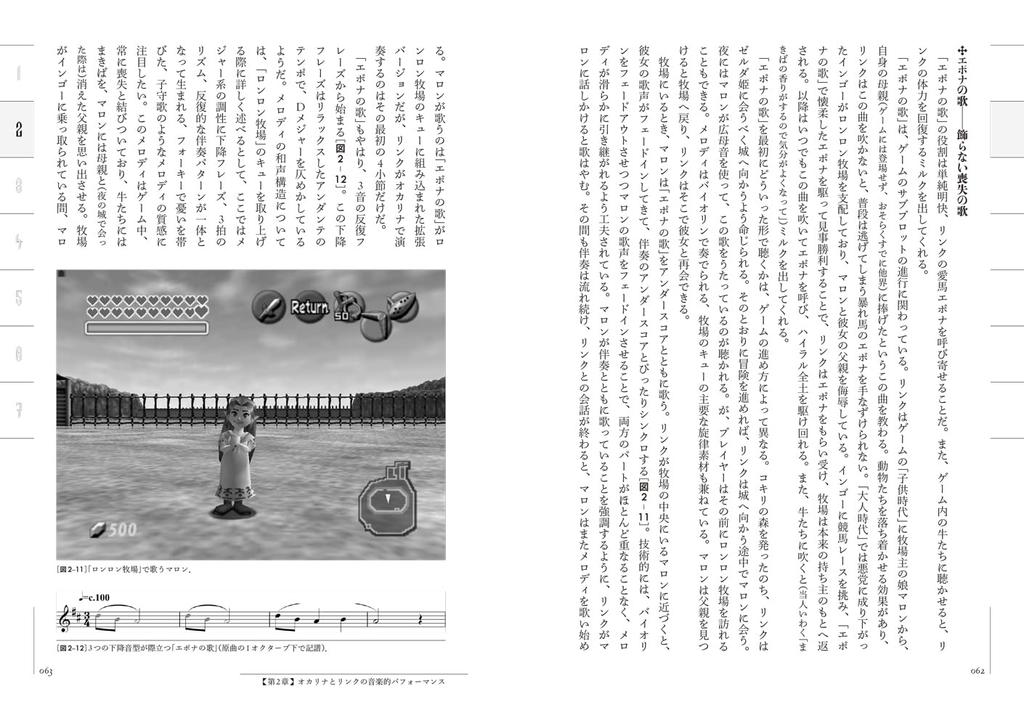
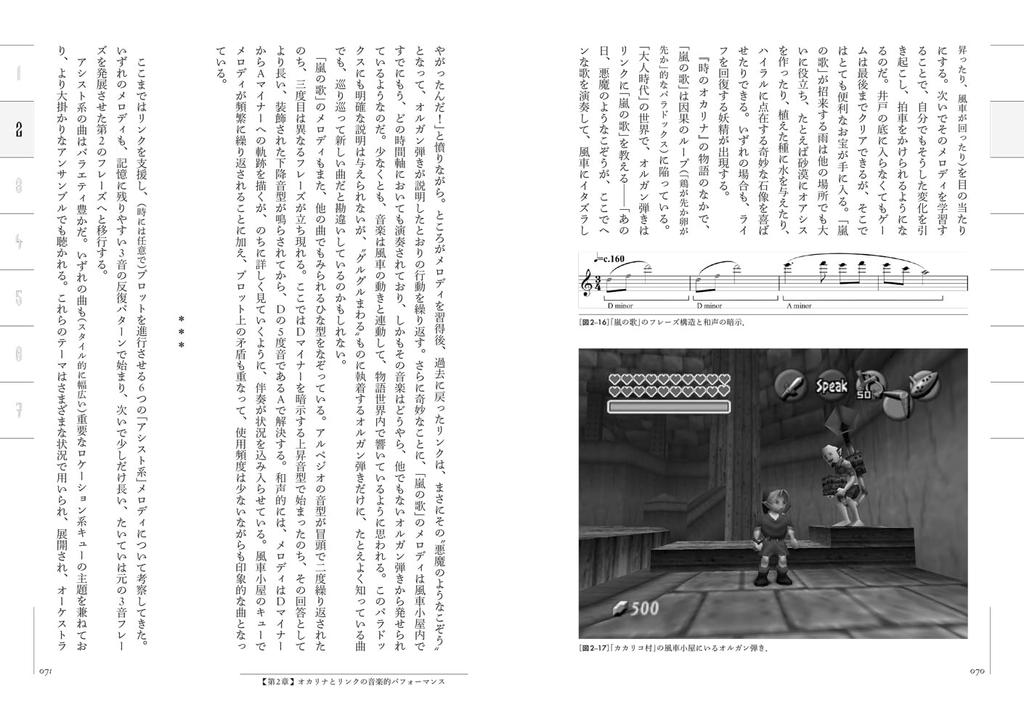
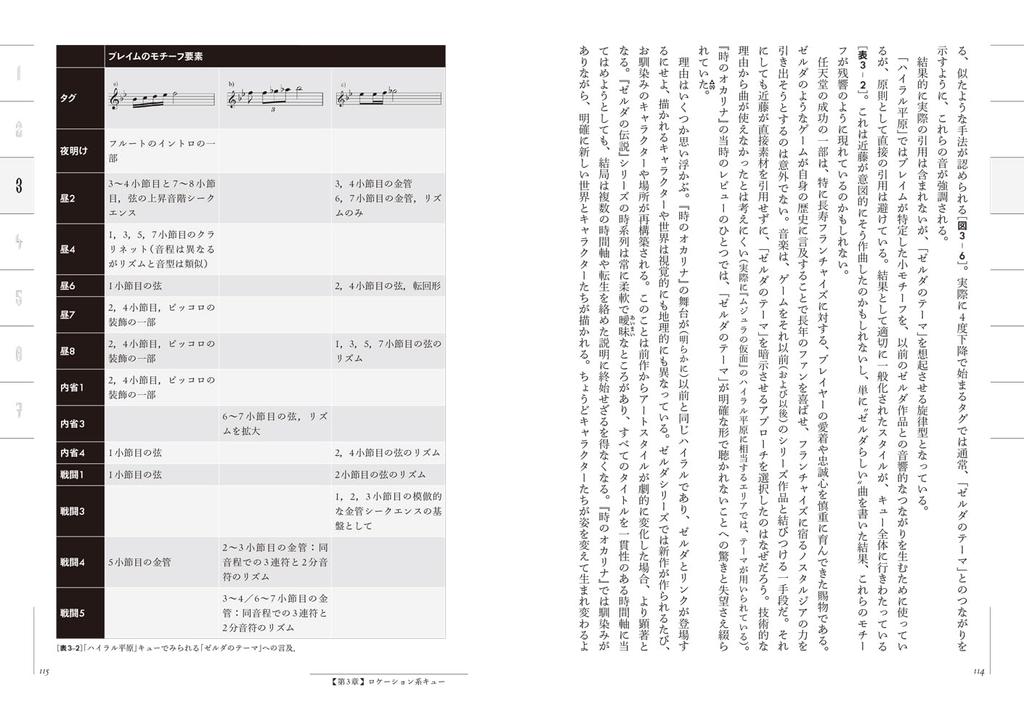
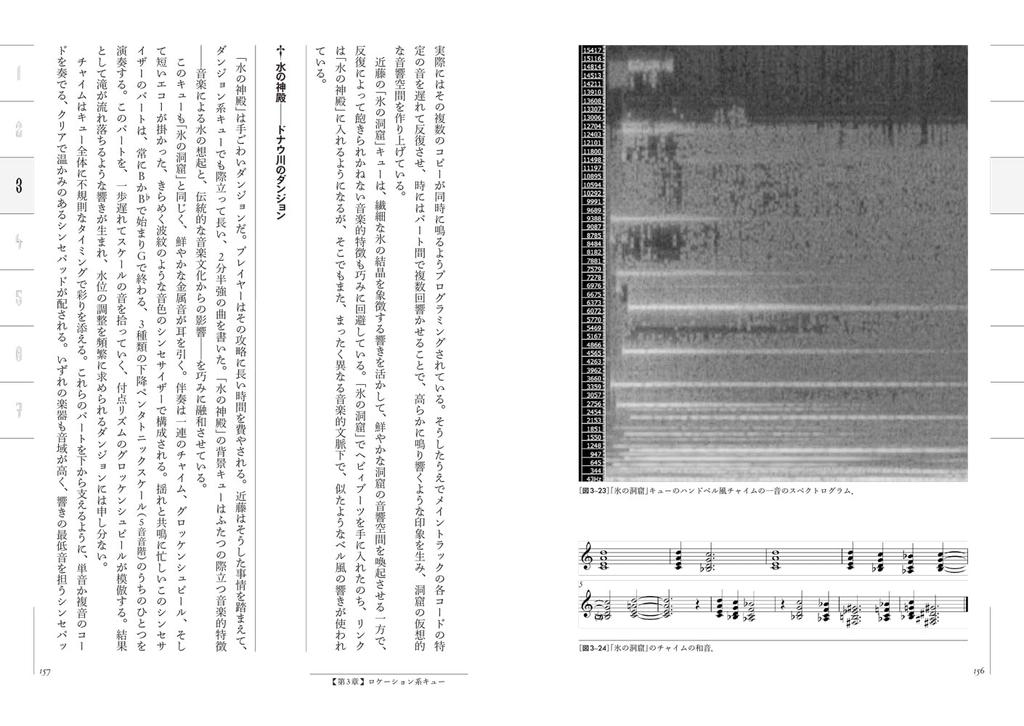

![Easy and Fun Ocarina Book To Play Latest Hit [Popular & Songs] [Revised Edition]](https://img.joomcdn.net/566a129f4c3392f60cb2a65d0d7b62a864e91c5d_74_100.jpeg)






![Easy Japanese Masterpieces To Play On the Ocarina for C Furigana Included Accompaniment CD tuning/Do-Re-Mi [Piano Included]](https://img.joomcdn.net/29001c6b1bc9899de5c198c74e17377c177523e3_74_100.jpeg)
![Easy and Fun To The Complete Ocarina Collection Play! [2nd Edition]](https://img.joomcdn.net/4c57b5fb758572aef5e6fef46d1b7d6abcf54369_74_100.jpeg)







![[CD] TV Drama Sakura No Tou (Cherry Blossom's Tower) Original Sound Track NEW](https://img.joomcdn.net/2b68a5eff4a7f9672798c604caf87947383a0710_100_100.jpeg)
![Princess Mononoke [Blu-ray]](https://img.joomcdn.net/8f5c27e9018641db6e8b6f832a70496fa5364b6b_78_100.jpeg)
